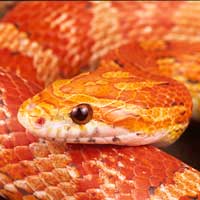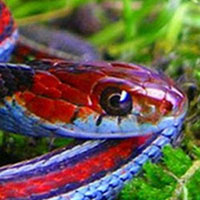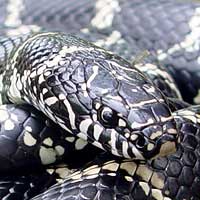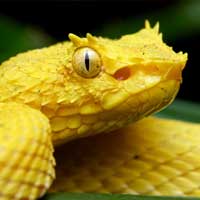Dixon’s Milksnake: A Complete Care Guide
The Dixon’s Milksnake is scientifically named Lampropeltis triangulum dixoni. It belongs to the Colubridae family, a large group of non-venomous snakes.
Scientific Name: Lampropeltis triangulum dixoni
Snake Family: Colubridae

Dixon’s Milksnake: An Overview
Dixon’s Milksnake (Lampropeltis triangulum dixoni) is a subspecies of the milksnake, renowned for its vibrant red, black, and cream or white banding. Found in parts of Central and North America, this non-venomous snake is a popular choice for reptile enthusiasts. Known for its manageable size, striking coloration, and docile temperament, Dixon’s Milksnake is ideal for both beginners and experienced snake keepers. This guide provides an in-depth look into its habitat, diet, care, and more.
Where Does Dixon’s Milksnake Live?
Dixon’s Milksnake is native to the semi-arid and forested regions of Central and North America. Its natural adaptability allows it to thrive in diverse habitats, making it relatively easy to replicate its environment in captivity.
| Habitat Feature | Description |
|---|---|
| Geographic Range | Central and North America, including Mexico |
| Preferred Environment | Grasslands, forests, and rocky areas |
| Climate | Temperate to semi-arid, with moderate humidity |
What Does Dixon’s Milksnake Eat?
Dixon’s Milksnake is a carnivore that preys on small mammals, birds, reptiles, and amphibians in the wild. Providing a proper diet in captivity ensures its health and vitality.
- Juveniles: Feed on pinky mice every 5-7 days.
- Adults: Feed on adult mice or small rats every 7-10 days.
- Prey Size: Ensure prey is no larger than 1.5 times the snake’s girth.
- Hydration: Provide fresh water daily for drinking and soaking.
Behavior and Temperament of Dixon’s Milksnake
Dixon’s Milksnake is known for its shy and non-aggressive nature, making it an excellent pet for first-time snake owners. Its temperament is generally calm, though it may exhibit defensive behavior if startled.
- Shy Nature: Prefers hiding but becomes more confident with regular handling.
- Activity Level: Nocturnal, though it may explore its enclosure during the day.
- Defensive Behavior: Rarely bites but may mimic rattlesnake behavior when threatened.
How to Ensure a Healthy and Long Life for Dixon’s Milksnake
With proper care, Dixon’s Milksnake can live up to 15-20 years in captivity. Maintaining optimal environmental conditions and monitoring for health issues are crucial to its longevity.
| Health Issue | Symptoms | Prevention |
|---|---|---|
| Respiratory Infections | Wheezing, open-mouth breathing | Maintain proper humidity and temperature |
| Skin Shedding Issues | Incomplete or stuck sheds | Ensure adequate humidity levels |
| Parasites | Visible mites, itching | Regularly clean and disinfect the enclosure |
Reproductive Traits of Dixon’s Milksnake
Dixon’s Milksnake is oviparous, laying eggs rather than giving birth to live young. Breeding this species in captivity is straightforward with proper environmental adjustments.
- Mating Season: Late winter to early spring.
- Incubation Period: Approximately 60-65 days.
- Clutch Size: Typically 6-12 eggs.
- Maintain an incubation temperature of 80-85°F for optimal egg development.
How to Handle and Care for Dixon’s Milksnake
Caring for Dixon’s Milksnake is straightforward, making it an excellent choice for beginners. Proper handling and enclosure maintenance ensure a stress-free and healthy snake.
- Provide an enclosure with a temperature gradient of 75-85°F.
- Use a substrate like aspen shavings or coconut fiber for burrowing.
- Include hiding spots, climbing branches, and enrichment items.
- Handle gently and regularly to build trust and reduce stress.
- Clean the enclosure frequently and provide fresh water daily.

















